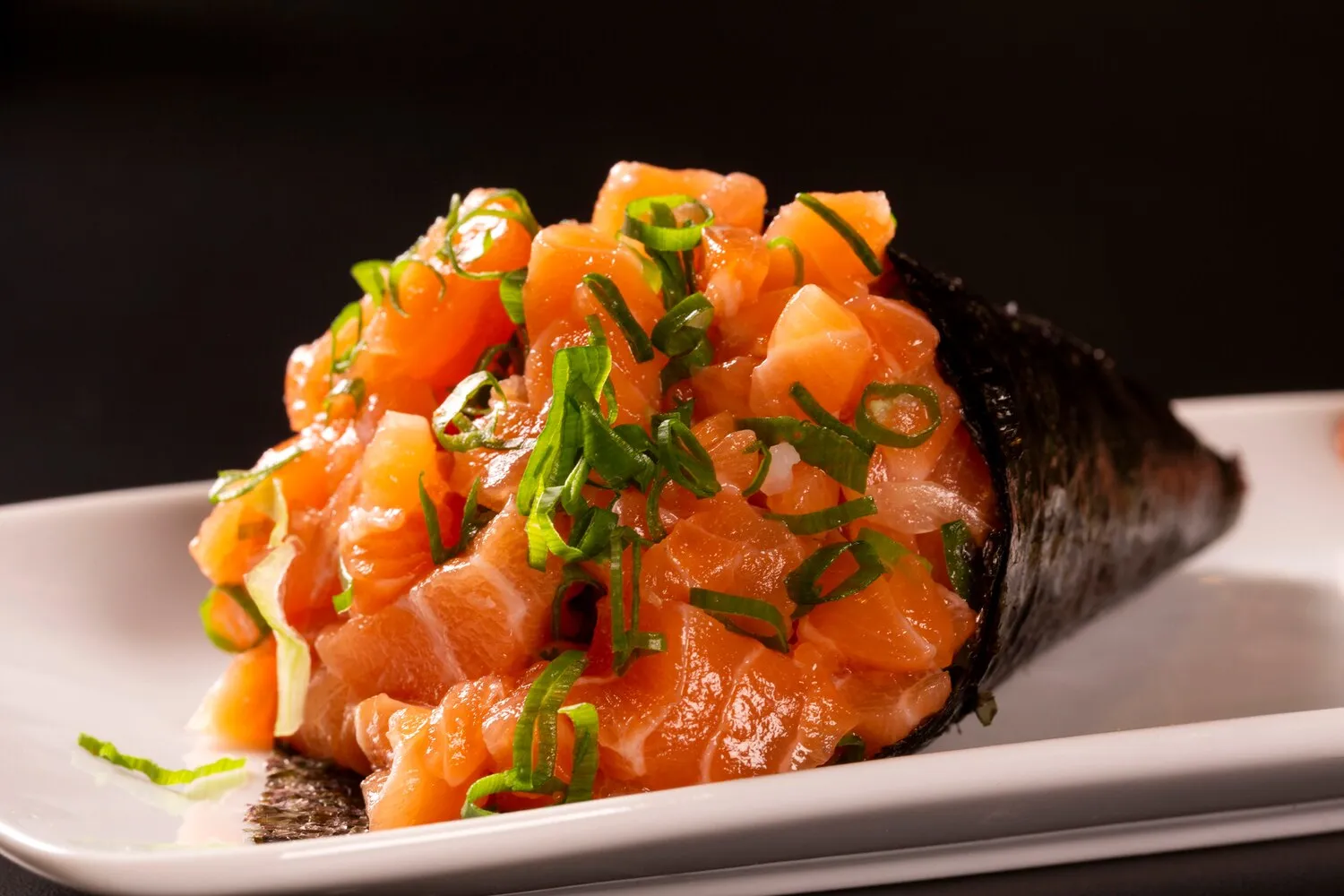
Temaki
Sushi hand roll with a variety of fillings.
Nutrition Facts
* The % Daily Value (DV) tells you how much a nutrient in a serving of food contributes to a daily diet. 2,000 calories a day is used for general nutrition advice.
Lives Sushi Lounge
The exact origins are debated, but Temaki likely emerged as a casual, quicker alternative to formal sushi, possibly originating in street food stalls or restaurants in the Edo period (1603-1868) where speed and customization were desired. It offered a more accessible way to enjoy sushi ingredients.
Temaki embodies the Japanese concept of communal dining and customization. It's often prepared and eaten immediately, emphasizing freshness and the interactive aspect of assembling your own roll. It is a casual and fun way to enjoy sushi and is frequently enjoyed at home.
DIY Sushi
Temaki is a do-it-yourself dish, making it interactive and fun for gatherings. Everyone can customize their own roll according to their preferences.
Casual Dining
Unlike formal sushi like nigiri, temaki is a casual and approachable way to enjoy sushi. It's often eaten with hands, making it less formal.
Freshness
Temaki is meant to be eaten immediately after being assembled, emphasizing the importance of fresh ingredients and flavors.
Temaki offers a dynamic combination of flavors and textures. The nori seaweed provides a savory, slightly salty base, while the sushi rice offers a mild sweetness and satisfying chewiness. The fillings introduce a range of flavors from the richness of fatty tuna to the clean taste of cucumber and the umami of soy sauce.
The dominant flavor is often determined by the chosen fillings. Common fillings like tuna (maguro), salmon (sake), yellowtail (hamachi), or shrimp (ebi) provide varying levels of richness and seafood flavor. Vegetables such as cucumber, avocado, or sprouts add freshness and textural contrast. Condiments like soy sauce, wasabi, and ginger enhance the overall experience with saltiness, spice, and cleansing properties.
Rice Preparation
Use sushi rice and season it properly with rice vinegar, sugar, and salt. The rice should be slightly sticky but not mushy.
Nori Quality
Choose high-quality nori that is crisp and flavorful. Store nori in an airtight container to prevent it from becoming stale.
Assembly Speed
Assemble the temaki quickly to prevent the nori from absorbing moisture from the rice and fillings, which can make it soggy.
Filling balance
Don't overfill the temaki. A small amount of each ingredient ensures a balance of flavors and textures in each bite.
Explore additional Sushi dishes and restaurants
Explore SushiDiscover top dining spots and culinary experiences in Guarapuava.
Explore GuarapuavaLearn more about the food culture, restaurant scene, and culinary heritage of Brazil.
Explore Brazil